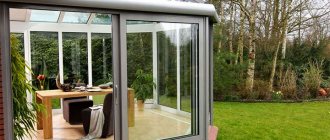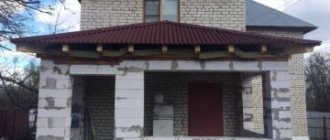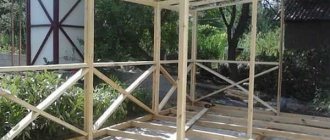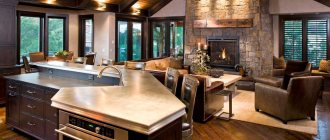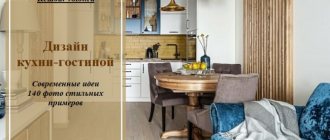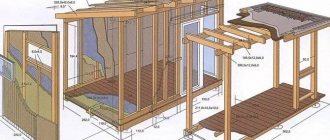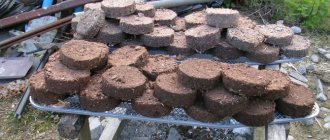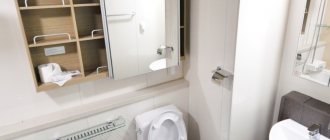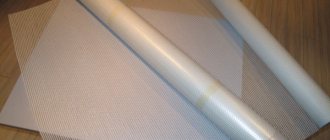The construction of country houses and cottages quite often lasts for years, so at the very beginning of this complex process it is necessary to install temporary residential and non-residential structures. Such buildings include garden houses and cabins, which greatly facilitate life and work on the site until permanent structures are erected on it and all the necessary communications are provided. As practice shows, a properly assembled shed with a veranda can serve for years, and by slightly changing its design, you can create a living or storage space, a utility block or a bathhouse.
Ready-made project of a change house with a veranda covered with siding
A distinctive feature of the cabins is their versatility and ease of installation. Summer residents, builders, hunters, and foresters have long appreciated the benefits of cabins. This is exactly the case when maximum returns are obtained with a minimum of costs. But in order for this advantage to be fully revealed, you first need to clearly define what exactly the change house is for.
How to do
A change house with a terrace has a lot of advantages, one of which is ease of construction. Even a person who does not have proper experience in this matter can cope with construction work.
Foundation construction
Lathing is the basis of a country house. To create it, it is necessary to use high-quality materials, then the change house will serve for a long time.
Change house with terrace
In addition, it is important to take care of the frame construction project. If the calculations are incorrect, this will cause deformation and destruction of the building.
Foundation
The foundation of any structure is the foundation. When laying it, you need to make sure that it will not come into contact with moisture and various plants. The bases for a wooden cabin with a veranda are made of concrete blocks. They are placed strictly level and secured with staples.
Even at this stage it is necessary to take care of laying the insulation. It is mounted between stone and wood. Most often, roofing felt is used for this. Attach the frame of the cabin to the base. For this purpose, metal sheets and dowels are used. But this information will help you understand which strip foundation for a house made of foam blocks should be used.
Underground
If you are going to equip an underground floor, then first you need to find out about the level of groundwater in your area. Since moisture is unacceptable for the foundation, when arranging the subfloor it is necessary to carefully insulate the structure from water.
For these purposes, it is worth using sheet waterproofing coatings. You can buy them at any hardware store. Drainage systems will act as additional protection. They prevent the subfloor from flooding. But how to insulate the floor on the veranda, and what materials should be used, is described in detail in this article.
Rafters
These are load-bearing parts that are the basis for any pitched roof. Their installation should take place at a distance of 60 cm from each other. They are fixed using self-tapping screws and metal corners. The quality characteristics of the rafters must be at a high level. Do not forget that their main function is to support the weight of the roof and the draft.
Roof
When carrying out construction work on the construction of a change house with a veranda, it is necessary to calculate the parameters of the roof and rafter system. This calculation involves calculating the loads that affect the structure. You still have to take into account the dead weight of the roof. But the photos and videos from this article will help you understand what a bathhouse with a garage under one roof will look like.
Floor
When arranging the flooring in the cabins, you don’t need to do anything complicated. The first step is to lay the insulation. It is best to use a layer of high-quality polyethylene. Secure the insulation using a stapler. Lay the sheathing using 10x10 lumber. Cover the top of the frame with a 1.5x2 floorboard. You can decorate the floor as you wish.
When laying the floor, it is necessary to treat it with special compounds. Thanks to them, you can protect the floor covering from moisture and various pests.
Photos and information from this article will help you understand which design of a country veranda is the most popular among gardeners.
But this information will help you understand what country greenhouses and greenhouses look like, and which one to choose for yourself.It will also be interesting to learn about what a country terrace looks like and how it can be built: https://2gazon.ru/postroiki/pristrojki/kak-postroit-terrasy-svoimi-rukami.html
You may also be interested in learning how to make a combined country shower and toilet.
Finishing
Before finishing the cabin, it is worth preparing the workspace. The first step is to fix the insulation and seal the seams and cracks with tape. Thus, the change house will become impenetrable to various weather conditions.
When all the preparatory activities have been completed, you can proceed directly to the finishing. You can sheathe the change house using boards, chipboard panels and lining. You may also be interested in learning how the walls of a bathhouse are decorated inside.
The video shows the finishing of the cabin:
Partitions
The main element of the change house remains partitions. Thanks to them, it is possible to delimit space and preserve thermal energy inside the room. The simplest and most convenient material remains drywall. It is easy to install, inexpensive and retains heat well. If you use plasterboard, then you need to add partitions to the shed design in advance in order to construct the sheathing taking into account the changes made.
In the video there is a change house with a terrace:
Variations in designs of cabins for summer cottages
In principle, as in any matter, with regard to the construction of a change house there are two ways. Buy a ready-made industrial version or go hand-made and build the building yourself. First, let's look at what types of summer cottages the industry offers us.
1. Panel room
The simplest, “budget” option. As a rule, disposable. The rather presentable appearance is deceptive, since due to the lack of special stiffening ribs, the building can become deformed and even collapse like a house of cards.
The fact is that panel technology involves the construction of a frame from thin wooden beams, and the outer cladding from clapboard. The interior is covered with chipboard, and the roof is covered with low-density iron sheets. As a rule, a panel shed cannot withstand gusts of wind and frost; it is better to use this option in the summer - for example, for cooking or as a utility unit.
2. Frame
This is a more reliable, but financially expensive option. Advantages - the use of deformation-resistant wooden beams, visual appeal. Disadvantages - using mineral wool for insulation dries out the air inside the house. Also, due to the dense layer of vapor barrier, the useful area of the change house is reduced.
3. Brusovaya
Luxury offer. It differs from its relatives in its high price. But this is understandable, since massive logs are used for construction.
6105e34b706444d2b267476d520582d5.jpeA log cabin is a capital structure designed for more than one year of operation. It makes sense to spend money on its construction once in order to solve several dacha problems at once for a long time. In addition to the function of storing equipment, such a nice wooden house can serve as a bathhouse. Only in this case should you worry about all internal communications in advance (for example, about partitions, installing a stove or water heater).
4. Container
A completely acceptable type of country house that can organically fit into any design style of the site. The frame is made of a metal channel, and the side walls are made of panels of a modern material called sandwich in English. The advantages of the container model are reliability, durability, and the ability to retain heat inside.
Choosing a cabin
The purpose of the cabin is directly related to its design. For example, cabins that will be used as country houses must be insulated. It is also highly desirable that inside the utility unit there is a bathroom with a toilet and shower, and that repairs acceptable to humans have been made. For cabins used as a utility block and structures with a shower, the most important thing is high-quality waterproofing, especially if there will be building materials inside.
Project of a country house on a columnar foundation with a veranda
As an example of how a change house is built, we can consider its residential version, which, although it is the most expensive, including in terms of time, reveals what issues may arise during the installation of this, in general, quite simple structure.
The choice of cabin design is determined not only by its cost and functionality; the material from which it is to be built plays an important role. By and large, outbuildings come in two types: wooden or metal. Metal cabins are the most durable and with high-quality insulation they will serve well as housing or a utility unit for quite a long time, but their construction will require special welding equipment and skills to work with it.
Cladding of a country house with a veranda
It is obvious that the best option, especially in our forest-rich country, remains wood as the main building material.
Return to contents
General recommendations when choosing materials
The basis of the cabin will be a wooden frame. Although there are known versions of utility units assembled from panels, it should be noted that they are less durable compared to frame ones. Therefore, it is better to choose them when use is expected to last no more than 2-3 months. In addition, the manufacture of panel structures requires more skill than for assembly based on a frame.
Insulation of cabins is an important component of construction, but you should not purchase too expensive materials for this, since a cabin with a terrace is still a temporary space. Cheap, time-tested materials such as polystyrene foam and glass wool will do just fine.
The same applies to materials for waterproofing floors and roofs; roofing felt, construction polyethylene film, galvanized iron - these are the available materials from which it is advisable to build temporary country houses and storage facilities.
Insulation of the walls and ceiling of a country house with special foam
As for wooden building materials, in addition to external criteria, you need to pay attention to the degree of drying. If the boards and beams are not dry enough, during periods of cold weather, rain and snowfall they will become oversaturated with moisture and the dacha structures may suffer greatly. You should not rely too much on treating a damp or half-damp board with water-repellent compounds; the wooden structure must initially be dry.
Construction of a change house
The stages of constructing a change house are practically the same as during the construction of ordinary houses and cottages. The main difference is the attention to communications.
The process of insulating floors in a change house
As a rule, the matter is limited to supplying electricity to the utility unit; less often, a bathroom is installed in it (with a shower, washbasin and toilet), and heating is even less often provided. The stages of building a cabin with a veranda are as follows:
- Construction of the foundation;
- Frame construction;
- Roof installation;
- Insulation of the structure and installation of walls;
- Floor arrangement;
- Installation of doors and windows.
Positive aspects of a change house with an extension
Regardless of how long the construction work associated with the construction of the main house continues, the owner of the site will gradually get tired of the original appearance of the change house. He will be visited by thoughts of adding a little variety to this simple structure. For these purposes, an extension to the change house is being organized. This addition has a number of positive aspects, including:
- Reliable protection of the door from the adverse effects of moisture during precipitation such as rain or snow.
- The opportunity to be outdoors in a variety of weather conditions. A canopy constructed at the dacha can protect a person from snow, rain, as well as direct rays from the sun.
- The area of temporary housing is becoming noticeably larger. Essentially, adding a veranda turns the cabin into an additional small-sized home.
You can add a terrace in a short period of time and at minimal cost. In order to attach a veranda to a bathhouse or such a house, it is not at all necessary to hire a special team. All necessary procedures can be carried out by the owner of the site on his own if he has minimal knowledge and skills in this area.
Expert opinion Sergey Yurievich Construction of houses, extensions, terraces and verandas. If there is not even a rough understanding of how to implement such projects, it is better not to take risks and entrust the organization of the extension to specialists who are well versed in drawings. The right step would be to entrust the construction work to the same workers who were initially involved in the construction of the temporary extension.
Bulkhead
As for the roof, as a rule, it is made of a pitched roof with an angle of inclination that does not allow snow or rainwater to remain on the surface for a long time. The structure consists of rafters and roofing. For the roof, a good choice would be roofing material and galvanized iron on top.
A terrace, like an extension to a small country house, will become a favorite place for your guests and relatives, provided that all rules and technologies are followed during construction. And with the correct organization of the additional space that appears, you will definitely achieve comfort.
How to build a shed with a veranda
If you decide to build a change house on your summer cottage yourself, first draw up a work plan (it can be found on the Internet from many manufacturers of change houses) and draw a preliminary drawing or sketch of the structure. The standard two-room cabin design has the shape of a “vest” with a hallway.
The presence of a veranda will add additional comfort to the structure. When determining a place for a change house, keep in mind that the distance between it and neighboring structures should be more than 3 meters.
The durability of the cabin depends on a reliable foundation (of course, if we are not talking about a mobile structure on wheels). If a standard strip foundation is not possible (for example, if the site is located on a slope), it would be better to use screw piles. In such a situation, do not forget about drainage, which will protect the site and the buildings on it from the destructive power of groundwater. Compacted gravel, sand and crushed stone are suitable for this. The most common type of foundation for such structures is columnar, it is made of concrete or brick.
The frame of the cabin is made of beams and is mounted from the corners, then it is the turn of the roof. The vertical beams along the facade are made higher, and the roofing itself will be supported on rafters connected by sheathing. At the same time, do not forget to drain the water.
The roofing covering is laid on top using bolts and screws. To make your roof reliable, practical and energy efficient, cover it with roofing iron and galvanized sheets, and you can insulate the roof with isospan. For those who do not like the sound of drops on an iron surface, we can recommend coating with soft ondulin.
Next comes the turn of insulating the walls and ceiling and installing windows and doors. Beams adjacent to the ground should be treated with an antiseptic to prevent exposure to fungus or insects. For the facade it is worth using roll insulation. And all sorts of cracks in the structure can be masked using polyurethane foam.
In order for the fire safety of a building to be high, it is necessary to apply a special impregnation to the wood and use glass wool of a high fire resistance class for insulation. In this case, the thermal insulation material must be distributed evenly everywhere, the layer must have a thickness of at least 10 cm.
When finishing work, pay attention to the fact that protective wood stains will not only provide your cabin with a modern and attractive appearance, but will also protect the structure from the negative effects of ultraviolet rays, temperature changes and all kinds of precipitation. At the end, an insulated floor is made (mineral wool is suitable as insulation). Afterwards, treat the floor with antiseptics that will protect it from external influences.
DIY house extension
Dear visitors to the site “Visiting Samodelkin,” from the material presented by the author you will learn how you can build an extension to your house yourself and without the help of professional builders.
When living in a private house, there is always the opportunity to expand your living space, namely to make an extension. This type of extension can be different, both directly for a living space and for a secondary one, for example, an entrance hall or canopy. The material used is also different, there is a wide choice today. For example, the author created a frame-panel structure, which has a number of advantages, 1- it is, of course, quick to erect, 2- thermal conductivity is not inferior to brick and block. I cleared a site for construction, made a shallow foundation, assembled a timber frame, insulated it on both sides and plastered it over a reinforcing mesh.
So, let's look at what exactly the author needed to build an extension to the house?
1. timber 2. used red brick 3. cement 4. sand 5. board 6. polystyrene foam 7. mineral wool 8. mounting frame 9. plastic window 10. door 11. OSB 12. screws 13. nails 14. professional sheet 15. reinforcing mesh 16. corner 17. metal window sill 18. leather substitute (for front door upholstery) 19. floor tiles
1. trowel 2. shovel 3. spatula 4. hacksaw 5. screwdriver 6. drill 7. metal scissors 8. hammer 9. tape measure 10. level 11. container for preparing mortar 12. pegs with rope (for marking) 13. ax 14. scissors 15. garden wheelbarrow
Step-by-step instructions for building an extension to your house with your own hands.
The first step, of course, is to make a foundation, as with any other construction. The advantage of a frame building is that it does not need a massive buried foundation, unlike brick buildings, and therefore the financial costs will not be high. The author used used red brick as a base. Having cleared the area, I laid out a row of bricks and filled them with cement mortar, then began laying. Having made a brick foundation, I moved to the inside, filled up the fragments of stone and brick and filled them with concrete mortar, and the result was a slab. Red brick is laid out.
Lays brickwork, starting strictly from the corner. The author fills the inner part with fragments of red brick and stone, and fills the top with a liquid solution of cement and sand in a ratio of 1:3, so that everything flows and fills the gaps between the fragments. The result is a slab like this. Afterwards a layer of waterproofing in the form of roofing material is laid. Next, holes are drilled in the foundation for fastening the wooden beams. On the resulting wooden base, the author begins to install and fasten the bars vertically. It is worth planning the location of window and door openings in advance. The rafter system is being manufactured. The roof is covered with a metal corrugated sheet; it is important to slide the edge of the sheet 10-15 cm under the slope of the slate roof. It is also necessary to organize the correct outflow of rainwater using a metal gutter. A plastic window is inserted into the window opening, the cracks are filled with polyurethane foam. Next, the author prepared insulation in the form of mineral wool for the interior decoration, and the outside of the frame is covered with OSB. Finishing begins from the bottom up; the slab is cut to the required dimensions in advance. The entrance door is inserted and hung into the doorway; they didn’t buy a new one, because the old one is in very good condition, despite several dozen layers of paint, the door is well preserved, and it is already over 40 years old.
Preparatory work, initial stages of construction
A mobile structure used for temporary residence must have the quality characteristics necessary for safe operation. Adding additional sections is easier and more economical than building an object from scratch on a vacant lot. It is better to order a dacha change house from house-building factories or carefully consider all the details, dimensions, interior finishing materials, ending with zoning planning.
The durability of the utility block depends on how well the foundation site is prepared. If strip pouring of concrete is not practical (the slope of the site interferes), then it is reasonable to install screw piles. It is advisable to provide drainage in case of active movement of groundwater and melt water. Use gravel, crushed stone, sand, carefully compacting each layer. A layer of waterproofing in the form of roofing felt is laid between the concrete and the beam support, and ventilation holes from the solid foundation are left. The lower crown of the beam with a diameter of at least 10 cm will serve as a reliable frame for the floor and the construction of walls and partitions.
Finishing work
Once the roof is ready, windows and doors can be installed.
Next comes the turn of the floor. It will be double layered. The first, as builders call it, rough, is made from boards, laying them tightly parallel to each other.
The boards must be treated with a special antiseptic that will protect the wood from pests and extend the life of the flooring. Lay a film over the boards, attaching it with a construction stapler.
Then a layer of waterproofing - mineral wool - is laid.
On top is another layer of film.
And then again the boards. This is already a finished floor.
The boards for it must be clean and dry. Because the floor will be varnished or painted on top.
The external cladding of the cabin follows a similar principle. The walls are covered with film to insulate from the cold.
It is recommended to carefully seal all joints with tape. You can sheathe the outside of the walls with siding, composite panels, wooden boards, or plastic imitation. This, as they say, is a matter of taste.
To make the country house look as presentable as possible, craftsmen advise using such practical material as a block house. This is a planed board in the form of segments of polished timber. It looks very nice, perfect for a major household space.
The final stage is interior finishing work. You can’t do without electrical wiring here; you can install a water supply system inside and install a sewer system. Ventilation and heating – for those who want to add as much comfort as possible.
After completing the renovation, you will decide how you will use the change house in the future. Will it be just a utility warehouse or a cozy house.
Variants of cabins
Modular cabins can be divided both according to their functional purpose (in this article we are considering a residential option) and according to the materials used in construction:
Advantages of wooden cabins:
- heat;
- environmental friendliness of the material;
- variety of designs and shapes;
- affordable price;
- strength and reliability.
The disadvantages include the possibility of fire and the need to care for the wooden surface. But these problems can be partially solved with the help of special impregnations and wood care products.
Advantages of metal cabins:
- durability and service life;
- ease of care;
- resistance to various external influences;
- possibility of covering with material at the request of the owners;
- reliable protection against vandals.
The only downside is that even with a layer of insulation in such a home it can be cold in winter and hot in summer. Therefore, this option should be chosen by those who do not spend too much time in the change house, but only occasionally use it for its intended purpose.
According to the method of collection, cabins can be divided into several types.
- Panel cabins are the fastest, easiest and cheapest way to erect such a structure. Such a change house is temporary and does not require a special foundation.
- Log cabins are the most reliable and warm, so they are suitable for use in northern regions. In fact, such a change house is a small, but very practical and functional country house.
- Frame cabins are assembled using a special technology, so you can live in them even in winter. This building is being created for long-term living. The inside of the building is covered with clapboard or chipboard, and clapboard is also used outside.
Frame, roof and floor
The construction of the lower trim and joists, as well as the frame and roof rafters, is best done according to standard schemes. Usually there are no difficulties here if you know some of the nuances.
In order to prevent moisture from entering the room, it is necessary to insulate the underground. If this is not done, the floor boards may swell. There are voids between the foundation pillars, and they need to be filled with porous bulk material, for example, rubble or expanded clay. To prevent condensation from forming in the underground, there must be gaps or special vents between the spans. The outside of the utility block can be sheathed with any available material: iron, boards, siding or plastic. The main thing is that the sheathing does not allow or absorb moisture.
Project of a country house sheathed with siding
The requirements for internal cladding are not so high, so fiberboard, plywood or lining is suitable for it, and if the change house will be used as a room where they only change clothes and store garden supplies, then the inside may not be covered at all. An insulating material, such as polystyrene foam, is installed between the inner and outer skins.
Timber shed size 6x3 - construction diagrams
There are three types of log cabins: panel, frame and log.
Panel cabins
The cheapest and simplest option is panel cabins. However, they are also the most short-lived. In the construction of such cabins, a timber frame is used, installed on a foundation, and the walls of the building are decorated with clapboard.
It is impossible to live in such cabins in winter, and due to the lack of stiffeners, deformations are possible during prolonged use of the temporary structure.
Frame cabins
Frame cabins are significantly more expensive than panel cabins, but their quality is significantly higher. When creating the frame, bars measuring 10x10 cm are used, which helps to increase the strength of the building and, as a result, protects against possible deformations.
Log cabins
The third and most expensive type of cabins is log cabins; they are distinguished by high quality and long service life. Such buildings are often later used as bathhouses and other necessary premises at the dacha, sometimes for several decades.
For the construction of such cabins, 10x15 cm timber is used, and the facing material can vary, although lining is most often used.
Project selection
Choosing a construction project is a difficult and extremely responsible matter, because the change house should satisfy your needs as much as possible.
When choosing a project, there are several factors to consider:
- The place where you are going to put the shed
- Cabin size
- Duration of use of the cabin (the choice of foundation for construction, as well as the type of cabin, depends on this)
- Foundation
- Electrical wiring (do you need it or not?)
- Price
Taking into account all these factors, you can easily choose the project that suits you. If you do not have extra funds, you can choose a project from among those available from the company (standard projects are available almost everywhere, and their prices are significantly lower).
If you are not going to save on household items, you can order an individual project that ideally suits your needs.
Construction cost
The cost of building a log cabin depends on its type. The cheapest are panel boards, their price range ranges from 23,000 to 50,000 rubles. Prices for frame ones range from 60,000-150,000 rubles. Log cabins are the most expensive, their prices start from 100,000 rubles, and the upper limits vary widely.
About quality and cost
The price of production and sale of change houses in Moscow is influenced by the size of the product and the presence of additional elements. The remoteness of the site on which the structure will be erected also plays a role in its formation. We have several price lists for delivery within the Moscow Ring Road, beyond it and in an area further than 50 km, where the price for every 10 km is 500 rubles.
has achieved good quality through cooperation with a couple of trusted suppliers. Their wood is always properly dried and stored in proper conditions. When ordering here, you are sure that the materials will be good.
Construction process
To build a high-quality veranda for a change house, you must adhere to the following algorithm:
- Organize the base. Ideally, it is necessary to lay the foundation for both structures at once. But if the construction of the veranda is carried out later, then the right step would be to achieve maximum contact density between both structures. The most convenient option is to locate both the cabins and terraces on concrete blocks. In this case, all that remains is to adjust the height of the second foundation.
- Construct the lower trim. To make this element of the structure, you will need a beam 100 mm thick. Using prepared screws and corners, the beams are fixed and attached to the cabin.
- Mount supports located vertically. When performing this procedure, temporary fixation of supports is used using prepared jib bars. Arranging the floor. The boards are laid and then fixed using special fasteners or ordinary screws.
- Organize the top harness. To carry out this procedure, some components of the cabin that perform decorative functions are dismantled. The slope of the roof must be taken into account. It should not be less than 10 cm.
- Organize the roof. Before installing it, remove the screws from the old coating along the edges. Next, I place roofing sheets under the corrugated sheeting to the required length. They make railings. To organize these elements, the required number of recesses are made in the racks.
- The final finishing is carried out. To give the new structure a beautiful appearance, the corners are rounded, some defects are corrected, roughness is eliminated and individual structural elements are given an original shape. An electric planer is suitable for finishing work.
If you follow the described steps in compliance with the technology requirements, then building a veranda for the change house will turn out beautifully and without much difficulty. It is important to use the necessary electrified tools. With their help, you can increase the productivity of all work procedures many times over.
We recommend reading: How to make an extension to a house from foam blocks with your own hands Do-it-yourself frame extension to a wooden house How to attach a garage to a house?
What are they built from?
To attach a terrace or veranda to a shed with your own hands, you don’t have to spend a lot of money on purchasing materials. Their number is determined by the dimensions of the future structure. To organize the elements, lumber, fasteners and roofing elements are stocked. The builder will need:
- Racks and strapping, that is, wooden beams 100x100 mm.
- Jib posts and railings that perform decorative functions. The previously mentioned timber can play their role, but it will have to be dissolved in half.
- Lathing, the role of which can be played by boards less than 25 mm thick.
- Floor. To organize it, a board 3 cm thick will be enough.
- Roof. Its role will be played by corrugated roofing.
- Four adjustable supports. With their help, you can adjust the height of the structure after completing all installation work. Such structural elements become a prerequisite if we are talking about an area where the soil is prone to subsidence due to high humidity.
The assembly procedure is carried out using a variety of fasteners, which are played by:
- Screws.
- Nails.
- Self-tapping screws.
- Oblique and straight corners.
If you choose fasteners based on the design features, you will be able to reduce the load on individual boards.
Living room, bathroom and kitchen
Since the layout of the change house provides for the presence of a sewerage system, you need to decide in advance where you will have amenities and where the living quarters are. As mentioned above, the width of the cabin will be 4 meters and the length will be 8. This means that its total area will be about 32 meters.
In modern city houses on this area there is a one-room apartment with a kitchen and a bathroom. Approximately the same layout can be used when building a country house.
The number of rooms in a country house can be quite large. Of course, thirty square meters is not much of a space, but a living room, kitchen, shower room and toilet can be placed in it without any problems. If we consider the kitchen as an ordinary room, then we get a two-room change house.
Heating a two-room shed is not such a difficult task. To do this, it is enough to install an electric boiler with a power of no more than two kilowatts. Such a boiler does not even require a three-phase connection to the electrical network.
Do-it-yourself canopy - step-by-step instructions for beginners. Canopies made of different materials: wood, metal, polycarbonate (200 photos)
Do-it-yourself tandoor - step-by-step instructions for quick production at home (100 photos)- Do-it-yourself bathhouse made of timber - 120 real photos of ready-made solutions. Step-by-step instructions for beginners
We build walls and partitions
The outer perimeter is tied using metal corners with a stiffener. This design can easily withstand a gable roof loaded with winter snowdrifts. Budget decoration of interior walls involves the use of plastic panels, but it is better to use energy-efficient, environmentally friendly materials, such as construction lining and plywood. A wooden beam of 50*50 mm, laid at a distance of 60 cm from each other, is suitable for sheathing the walls. Laying of mineral and basalt insulation with a thickness of up to 50 mm is done end-to-end, and the double layer is staggered.
From the outside, the surface of the walls is covered with a block house and sandwich panels. Partitions are erected from moisture-resistant plasterboard . The number and area of individual rooms depends on the specific needs and budget of the customer. Door and window openings add to the overall cost. Country two-room cabins are ideal for families with children who require separate accommodation and a quiet, cozy corner.
Foundation
Unlike permanent buildings, the utility block can be placed on the simplest, columnar foundation. The depth of location, the distance between the pillars and their thickness vary depending on the size of the cabin and the type of soil; the general rules remain the principles of placement and waterproofing of the foundation. The pillars are placed not only at the corners of the future building, but also along the entire length of the support bars at a distance of at least 1.2 meters between them. The columnar foundation is laid out on a carefully compacted sand bed.
As for the material from which this type of foundation is made, you can use either brick (ceramic only) or ready-made concrete blocks.
The latter option is more preferable, since in this case the foundation is much more durable than a brick foundation. The foundation blocks or brickwork of the foundation must be strictly at the same level, protruding 200–300 mm above the ground.
An example of a foundation for a cabin with a veranda
The foundation blocks are laid using a regular cement-sand mortar, after drying which can be waterproofed. The most common waterproofing option is two layers of roofing felt laid on the foundation. They will prevent the wooden blocks laid on the blocks from getting wet. For temporary structures, such waterproofing is quite sufficient if there is additional insulation under the floor and the ventilation system is properly organized, especially for options with a toilet and rooms equipped with a shower.
Return to contents
Range of services
We go to the site: some clients need options with individual sizes. In this case, order a manager for your site. He will take measurements.
We assemble them in a workshop: the cabins, due to their small dimensions, are delivered ready-made. If there is no access to the installation site, the procedure is carried out directly on site. This does not affect the quality in any way, because even at the factory, all work is performed using hand tools.
We transport and unload: for this we have a crane, thanks to which the object will be immediately placed in the right place. And for residents of hard-to-reach areas, the company has prepared an all-terrain vehicle delivery service.
We install: if the structure is sent ready-made, our specialists will make sure that it is installed on your site in compliance with the standards.
Change house “for centuries”
The first thing a summer resident must decide is whether his change house will really be a temporary structure or whether it will turn into a full-fledged country house. If you want a change house “for centuries”, that is, for many years, then the most important decision for you will be the choice of construction site. Your future house should stand high on fairly solid ground.
From a plot of land approximately four meters wide and eight meters long allocated for construction, it is necessary to remove the fertile layer, without leaving a single stem or root of plants, since humus will form from them over time.
The wooden cabin itself has a small mass, so it does not need a powerful foundation. It will be enough to fill the area with a layer of sand and gravel and then compact it. The foundation for the change house can be columns made of ordinary bricks or concrete blocks.
However, if the owner wants to see on his site not an outbuilding, but a comfortable, albeit small, house, then it is better to install it on a concrete strip no more than thirty centimeters wide.
Canopies over the terrace
The terrace is not insulated or sheathed from the inside; only a floor and a canopy are installed.
The latter is made from various materials:
The frame of the canopy is made of wood, metal or suspended on cables. Lightweight structures with supports can be folded if necessary.
The canopy can be made over the entire area of the terrace, or it can cover only part of it.
The design of extensions is varied. The article describes the main layout options. The type of construction is selected for the house, site and region of residence. The choice of construction remains with the owner.
10.12.2017
And it all started as usual. Since ancient times, there has been a change house on the dacha plot, it doesn’t seem to be presentable, but there is a place to spend the night, store all sorts of dacha necessities, and hide from bad weather.
Insulate and protect
Massive beams adjacent to the ground are treated with an antiseptic against fungus, bees, ants, and other insects that can cause significant damage to load-bearing structures over the course of a year. To increase comfort during the hot summer and cold winter periods, it is necessary to competently approach the insulation of the facade. Block and roll insulation should be laid against wind - moisture - insulation. The use of polystyrene is allowed - carefully closing cracks and gaps using polyurethane foam.
Modern protective wood stains will provide a spectacular appearance, giving the shade of expensive wood species, and additionally protect against ultraviolet rays and seasonal abundance of precipitation.
